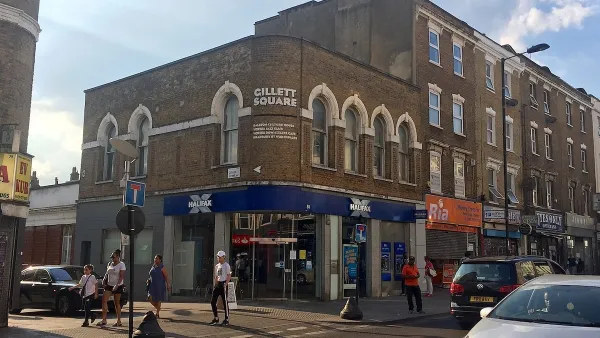Walmart stores -- once vilified by cities for their impact on local smaller retailers -- are now getting the red carpet treatment from some urban cities. Walmart has adapted its store design, and cities need the tax revenue from large retailers.
Urban downtowns have become the "last frontier" for big-box retailers. Where big-box retailers were once blocked from locating urban cities, the trend is changing. Walmart's focus on green practices, its adoption of fresh and healthy food initiatives, a willingness to abandon its suburban big box design approaches, and many cities' need for new tax revenues has enabled the company to make substantial inroads in urban areas across the country. In addition, many commercial real estate companies are benefiting from acquiring the 30,000-to-270,000-square-foot spaces where value retailers were previously not welcome.
Joel Groover writes in the December, 2011 issue of Shopping Centers Today: "Indeed, Walmart appears eager to take advantage of this newfound openness among cities toward discount retail. Rather than hunt for acreage on the outskirts of major metropolitan areas, the company is pushing to build smaller-format concepts within the city limits of such dense population centers as Chicago, Miami, New York City and Washington, observers say. Thus far, the discounter has announced plans to build a total of nine stores in Chicago alone. The first of these, a 10,000-square-foot Walmart Express, opened in the Chatham neighborhood of Chicago's South Side in July. Unlike in years past, local criticism of these plans was muted, Weinstock says, and the new store is already doing well."
Another excerpt from the article:
"For their part, big-box retailers are just as eager to find new customers, even if that means letting go of their attachment to suburban development models, McMahon says. Indeed, the stalled housing market and the oversupply of retail in the suburbs and exurbs has made cities all the more attractive to big-box stores, he says. "We now have 1.1 billion acres of vacant retail, mostly in big-box stores out on the strip, and some people believe that up to 300 million square feet of that will have to be demolished or repurposed," McMahon said. "Retailers are figuring out that inner cities are the one place in America with more spending power than stores. For the big-box industry, our downtowns are the last frontier."
"Best Buy, HHGregg and Home Depot have also been taking advantage of these lowered entry barriers in urban markets, McMahon says. Increasing flexibility with regard to store formats and sizes, a trend that has been growing for years now, has helped make the transition easier, he says. "The new Home Depot in Vancouver [British Columbia] has five stories of condo on top of it," McMahon said."
[Editor's note: This article is only available to members of the International Council of Shopping Centers (ICSC), who have access to the publication, Shopping Centers Today. Planetizen's policy is to curate articles our readers can access on the Web. However, in some cases -- when we feel an article is particularly relevant to the urban planning community -- we let our readers know about the article even if it is not available for free. Let us know what you think of our policy.]
FULL STORY: Love at second sight

Maui's Vacation Rental Debate Turns Ugly
Verbal attacks, misinformation campaigns and fistfights plague a high-stakes debate to convert thousands of vacation rentals into long-term housing.

Planetizen Federal Action Tracker
A weekly monitor of how Trump’s orders and actions are impacting planners and planning in America.

In Urban Planning, AI Prompting Could be the New Design Thinking
Creativity has long been key to great urban design. What if we see AI as our new creative partner?

King County Supportive Housing Program Offers Hope for Unhoused Residents
The county is taking a ‘Housing First’ approach that prioritizes getting people into housing, then offering wraparound supportive services.

Researchers Use AI to Get Clearer Picture of US Housing
Analysts are using artificial intelligence to supercharge their research by allowing them to comb through data faster. Though these AI tools can be error prone, they save time and housing researchers are optimistic about the future.

Making Shared Micromobility More Inclusive
Cities and shared mobility system operators can do more to include people with disabilities in planning and operations, per a new report.
Urban Design for Planners 1: Software Tools
This six-course series explores essential urban design concepts using open source software and equips planners with the tools they need to participate fully in the urban design process.
Planning for Universal Design
Learn the tools for implementing Universal Design in planning regulations.
planning NEXT
Appalachian Highlands Housing Partners
Mpact (founded as Rail~Volution)
City of Camden Redevelopment Agency
City of Astoria
City of Portland
City of Laramie





























